| Ships During the Era of European Exploration |
|---|
| www.studenthandouts.com ↣ World History ↣ Age of European Exploration ↣ Age of Exploration Maps and Pictures |
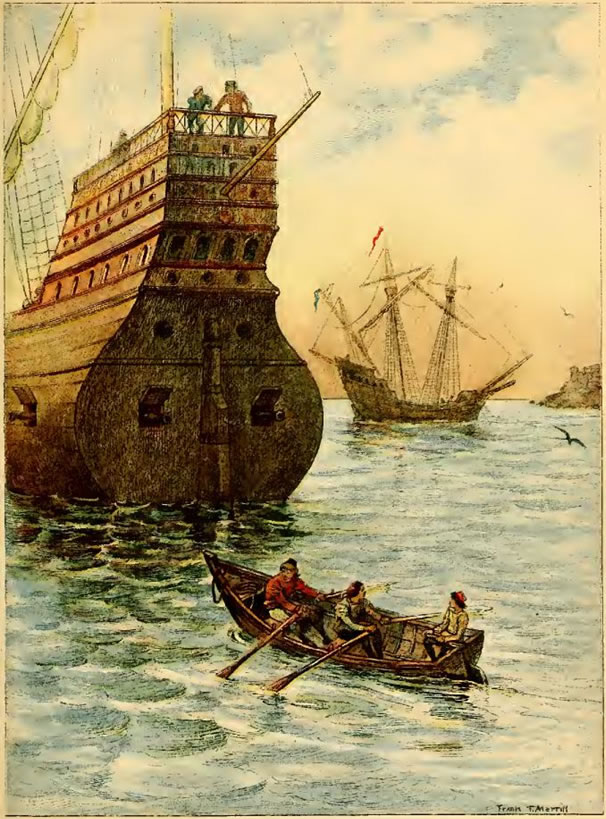 |
|
This illustration depicts a young Christopher Columbus sailing out on a rowboat to view ships in the Italian harbor. His older brothers man the oars. It offers a nice look at ships of the Renaissance, during the age of European exploration. The era of European exploration was made possible by several key advances in ship design and technology. These innovations allowed explorers to navigate the world's oceans more effectively and undertake long, perilous voyages.
Caravels: Caravels were a type of ship with a combination of lateen and square sails. They were highly maneuverable and had a shallow draft, which made them ideal for exploration. These ships allowed sailors to navigate both open seas and shallow coastal waters. Astrolabe: The astrolabe was an ancient instrument, but it was perfected and adapted for navigation during the Age of Exploration. It enabled sailors to determine their latitude at sea by measuring the angle between a known star and the horizon. This improved the accuracy of navigation. Compass: The compass, an ancient Chinese invention, became an indispensable tool for European explorers. It allowed sailors to maintain a consistent bearing even when out of sight of land. Sextant: The sextant was a more accurate instrument for measuring the angle between a celestial body (like the sun or a star) and the horizon. This improved the precision of navigation and was especially important for determining a ship's longitude. Improved hull design: Ships of the era were often constructed with sleek, efficient hulls that allowed for greater speed and stability. The introduction of copper sheathing on the hulls also helped protect against damage from shipworms and fouling, enabling longer voyages. Rigging and sails: The development of various types of sails, including the lateen and square sails, allowed ships to adapt to different wind conditions. This flexibility was crucial for long sea voyages. Mapping and cartography: Advances in mapmaking and the creation of more accurate charts helped navigators plot their courses more effectively. The work of cartographers and explorers like Prince Henry the Navigator contributed to this. Supply and storage innovations: The exploration era required better storage methods for fresh water, food, and other supplies. Innovations in provisioning were crucial for extended voyages. These advances in ship design and navigation, along with the bravery and determination of explorers, allowed for the unprecedented expansion of European exploration during this period. They paved the way for the discovery of new lands, trade routes, and the exchange of cultures and ideas between the Old World and the New World. |
 | 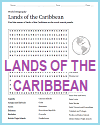 | 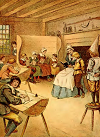 | 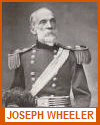 | 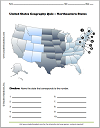 |
| www.studenthandouts.com ↣ World History ↣ Age of European Exploration ↣ Age of Exploration Maps and Pictures |








